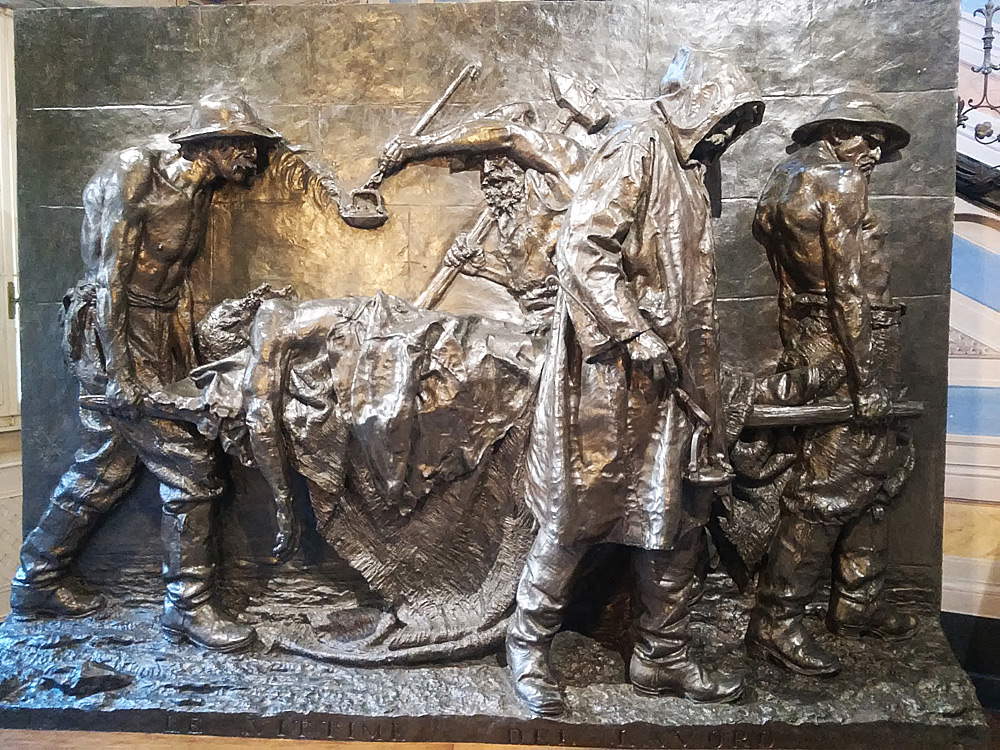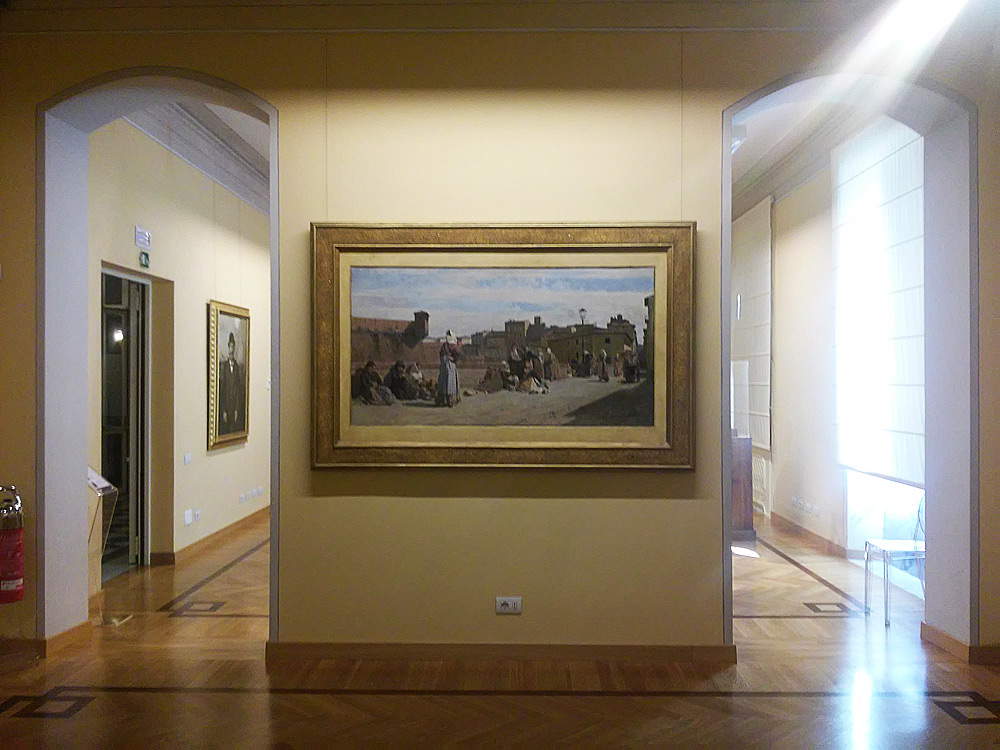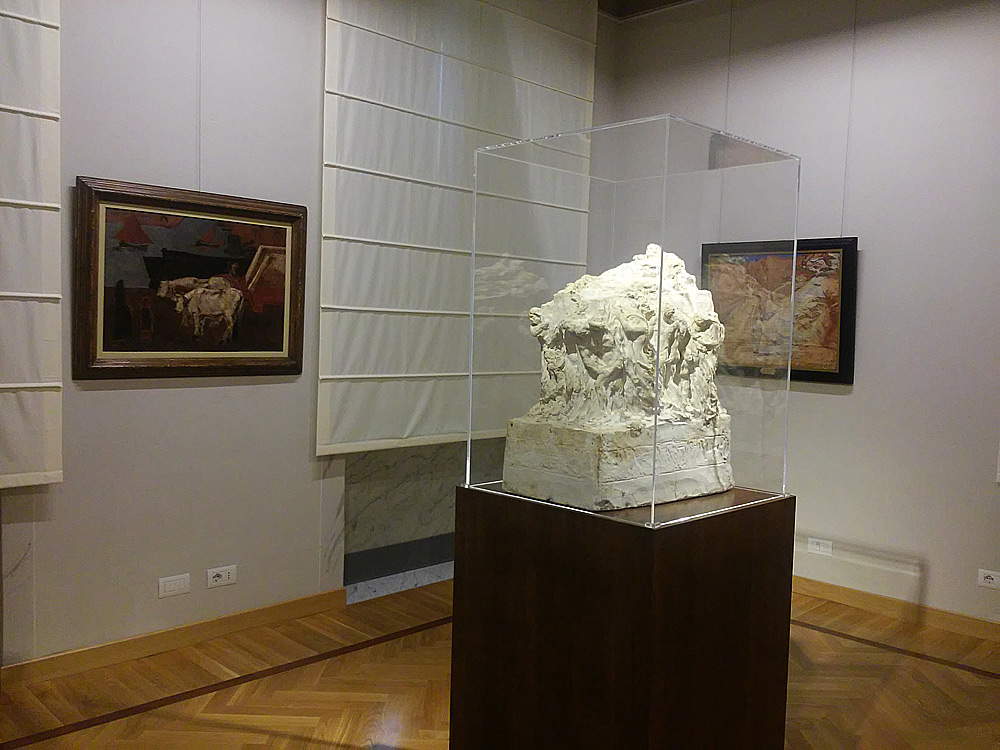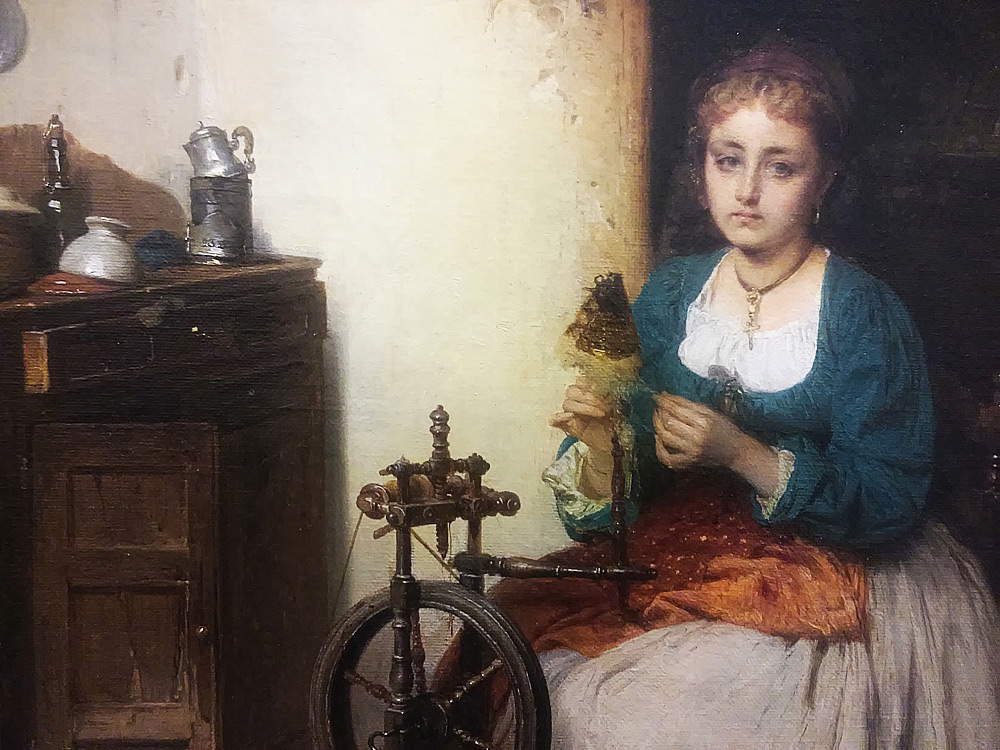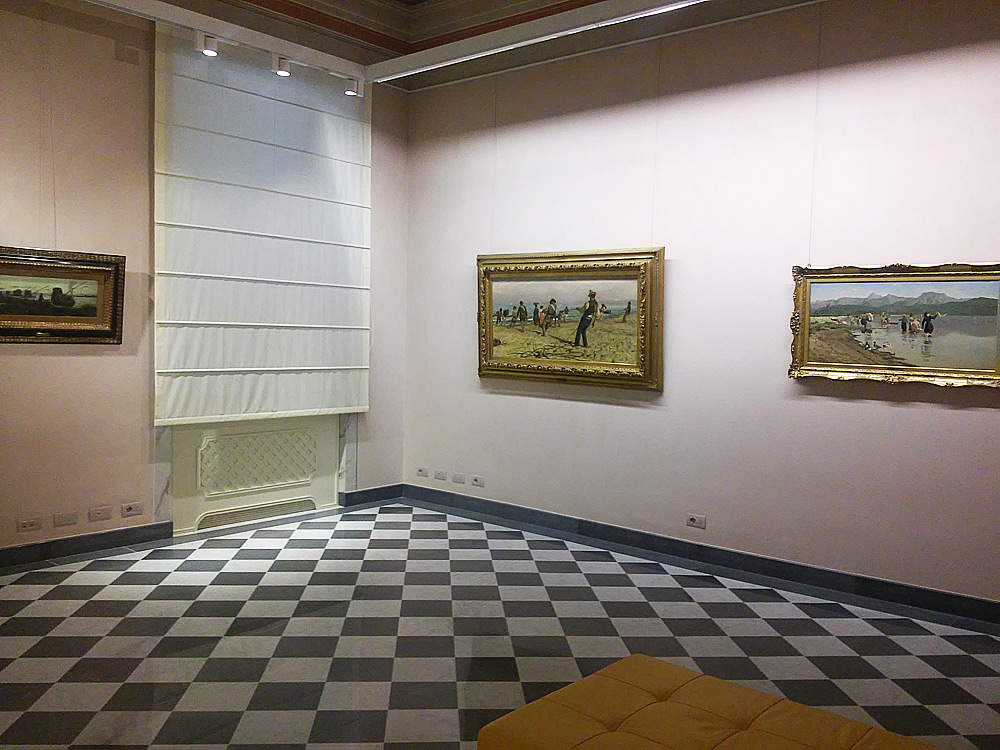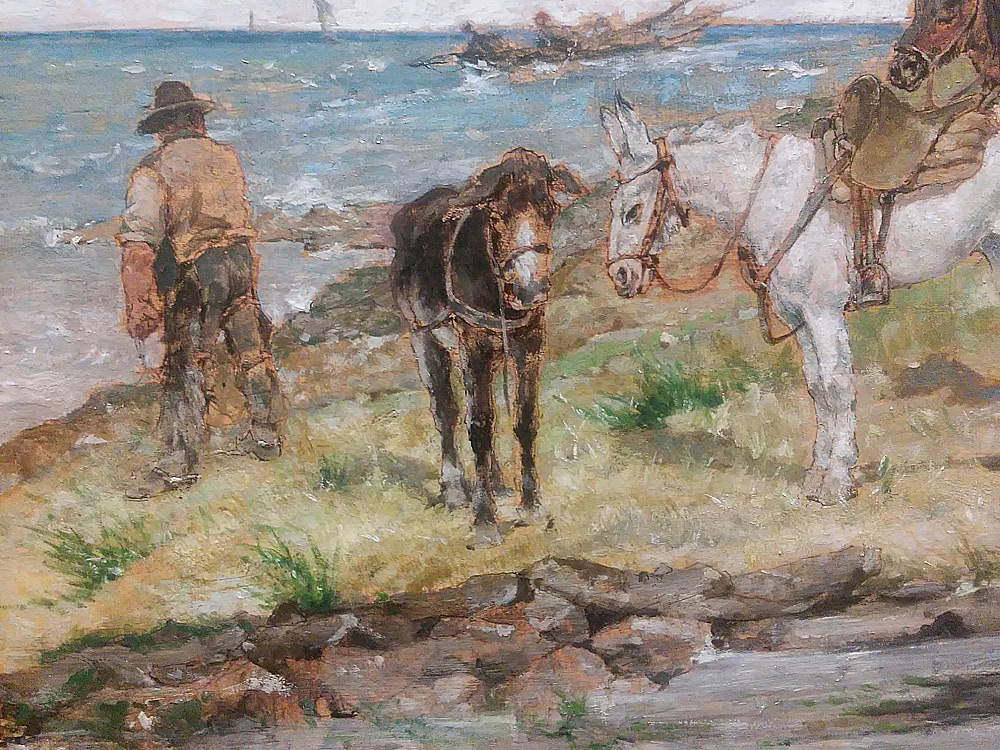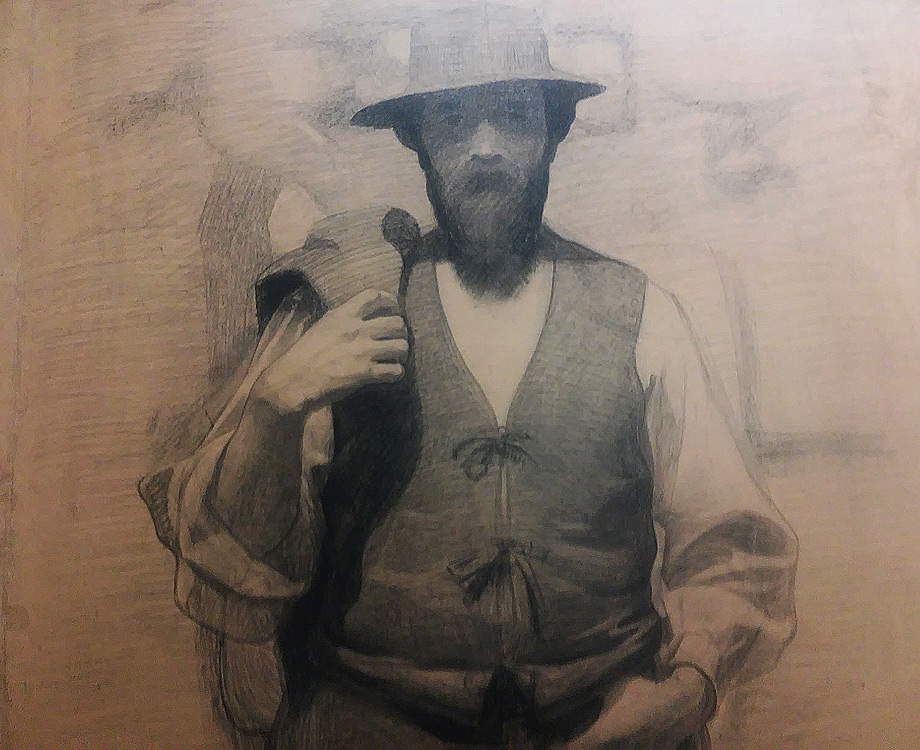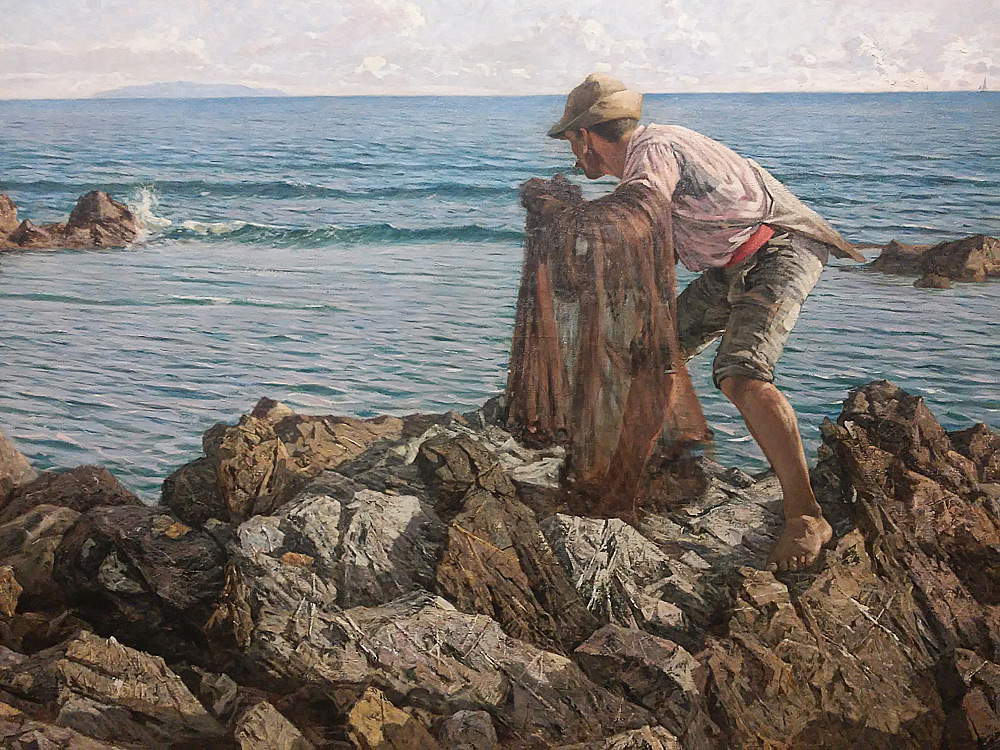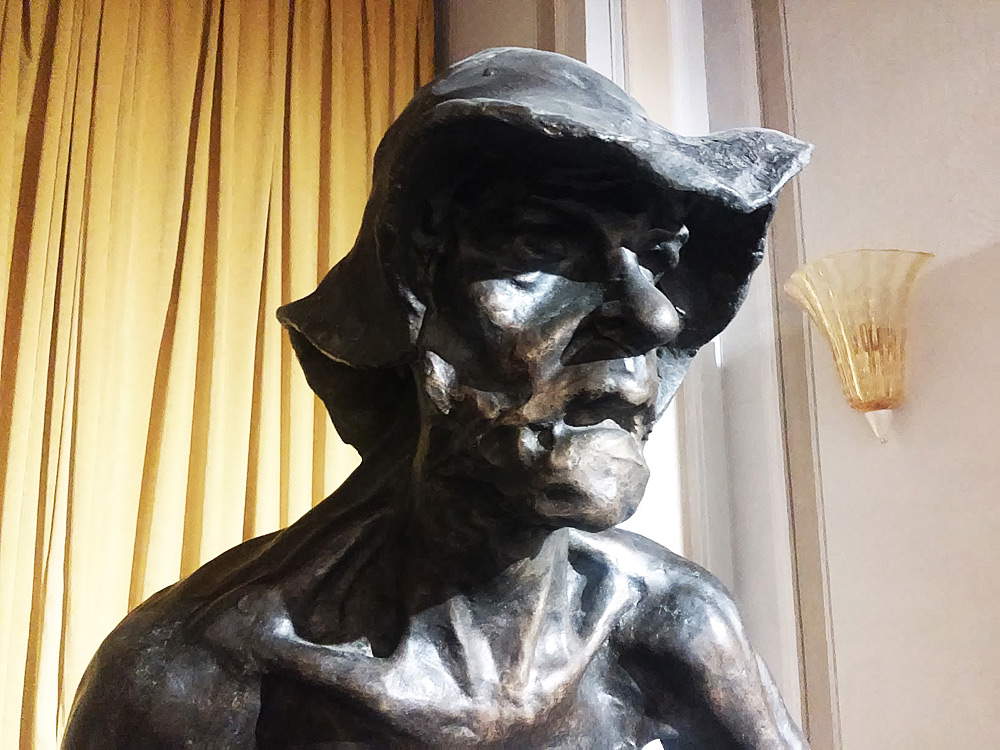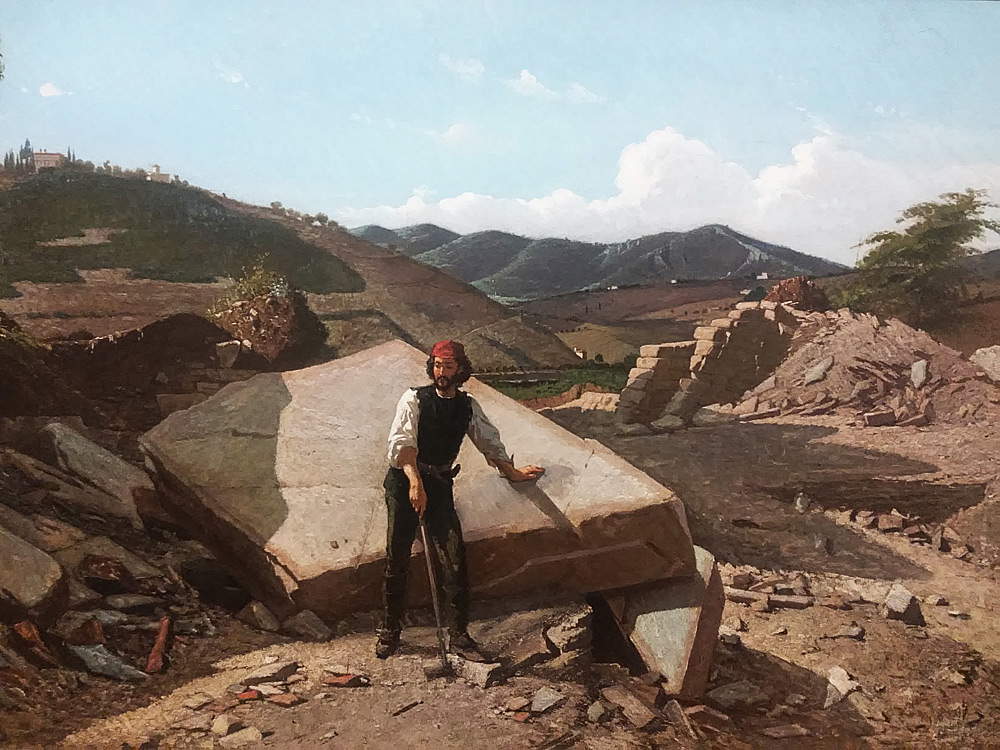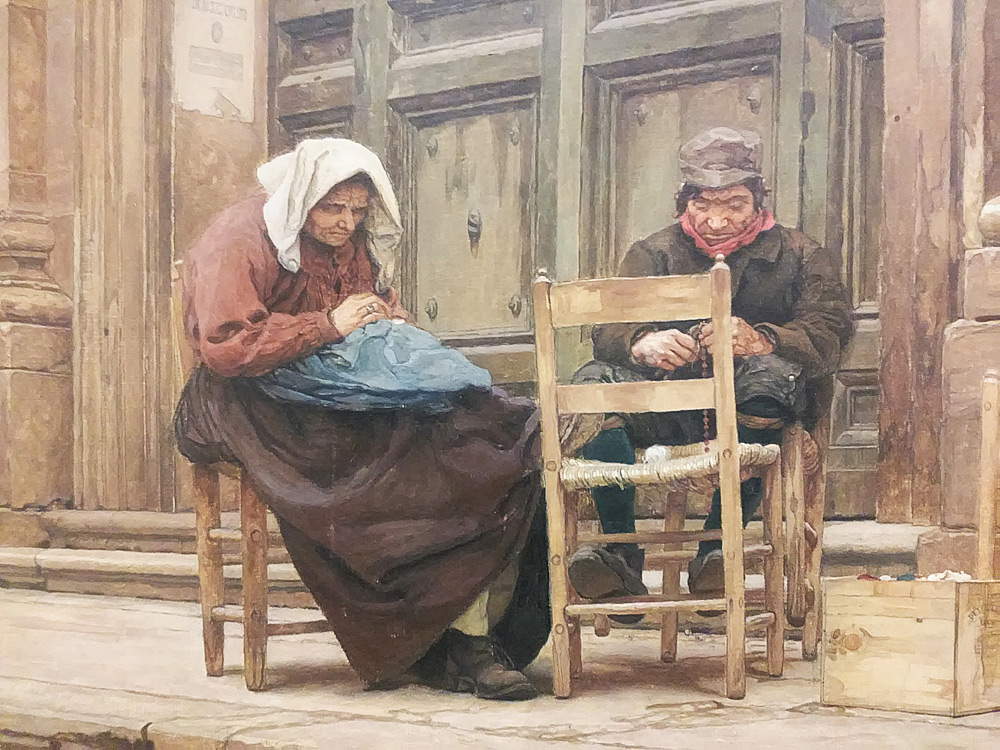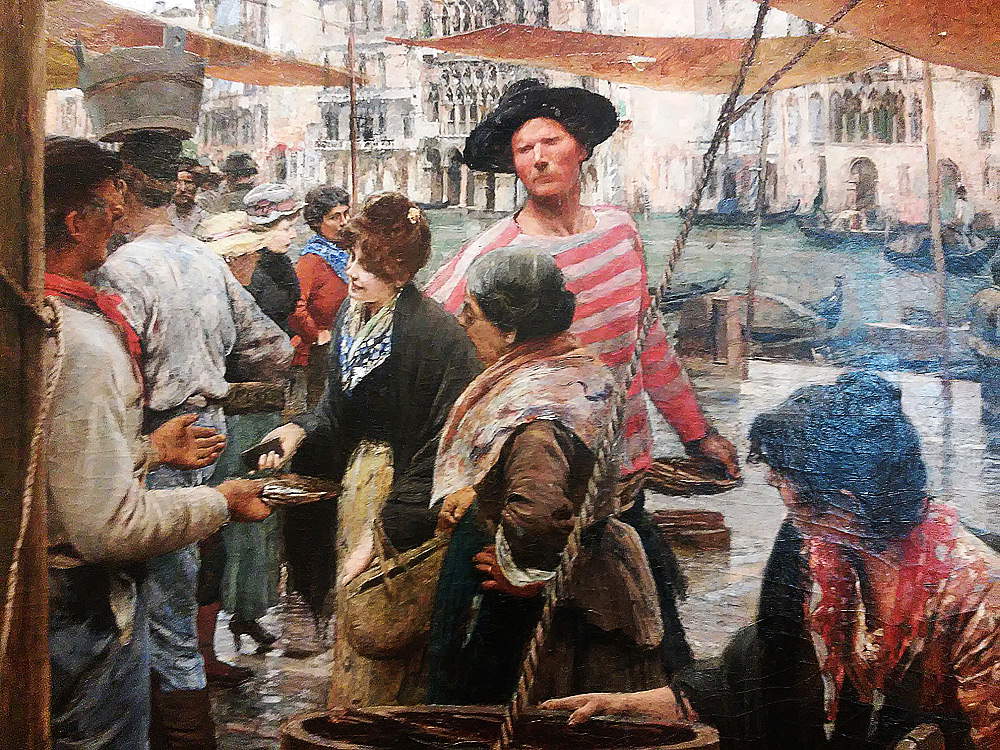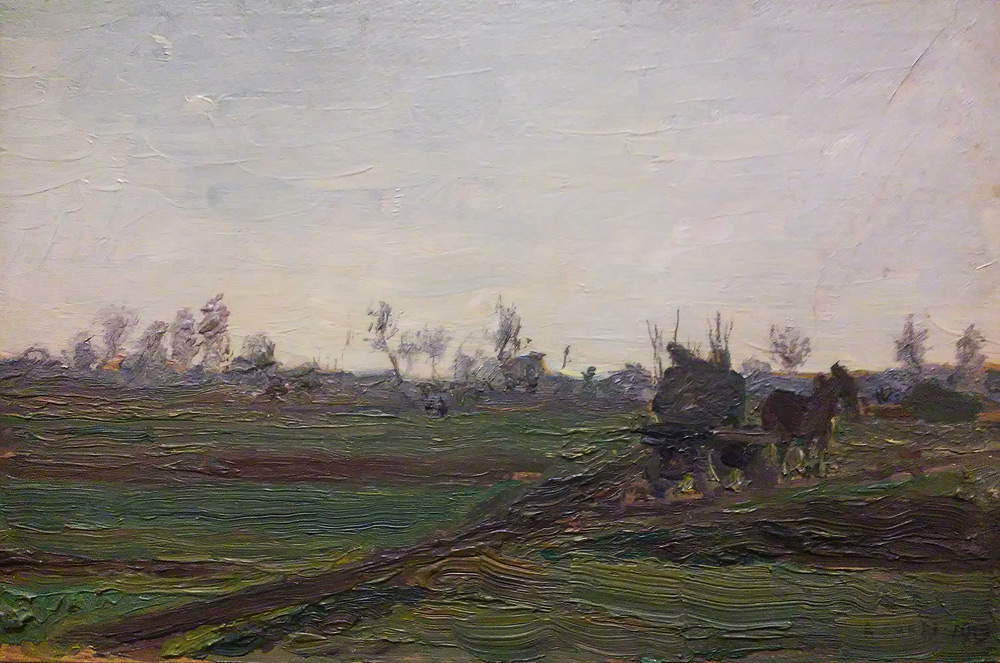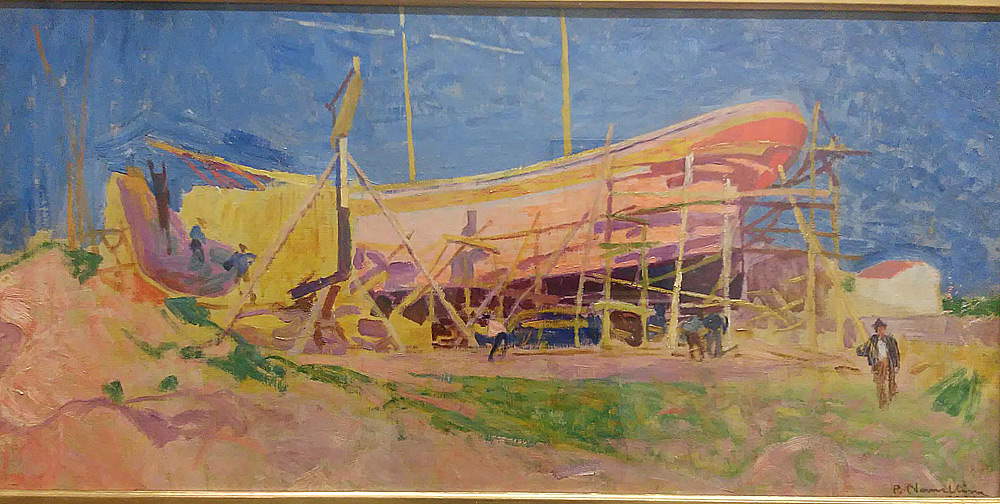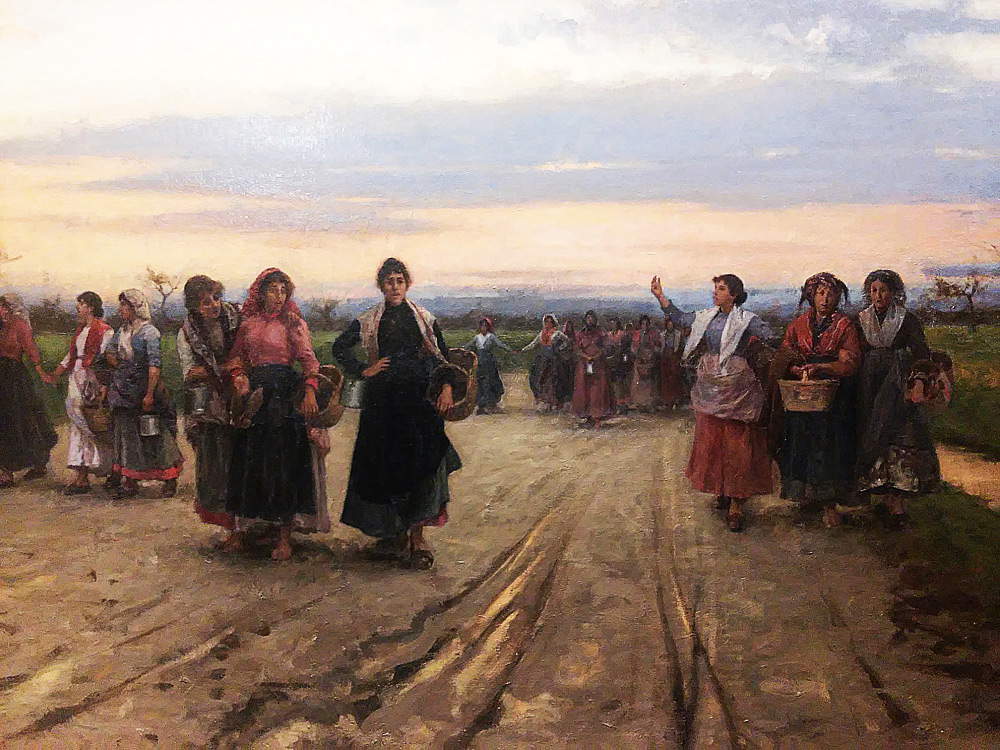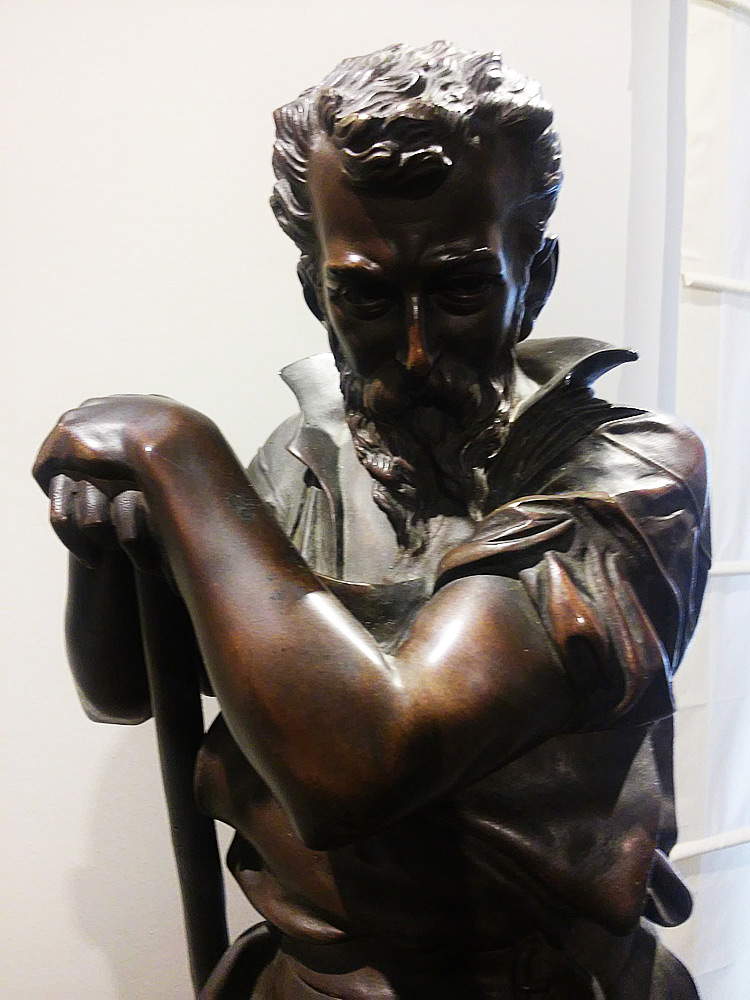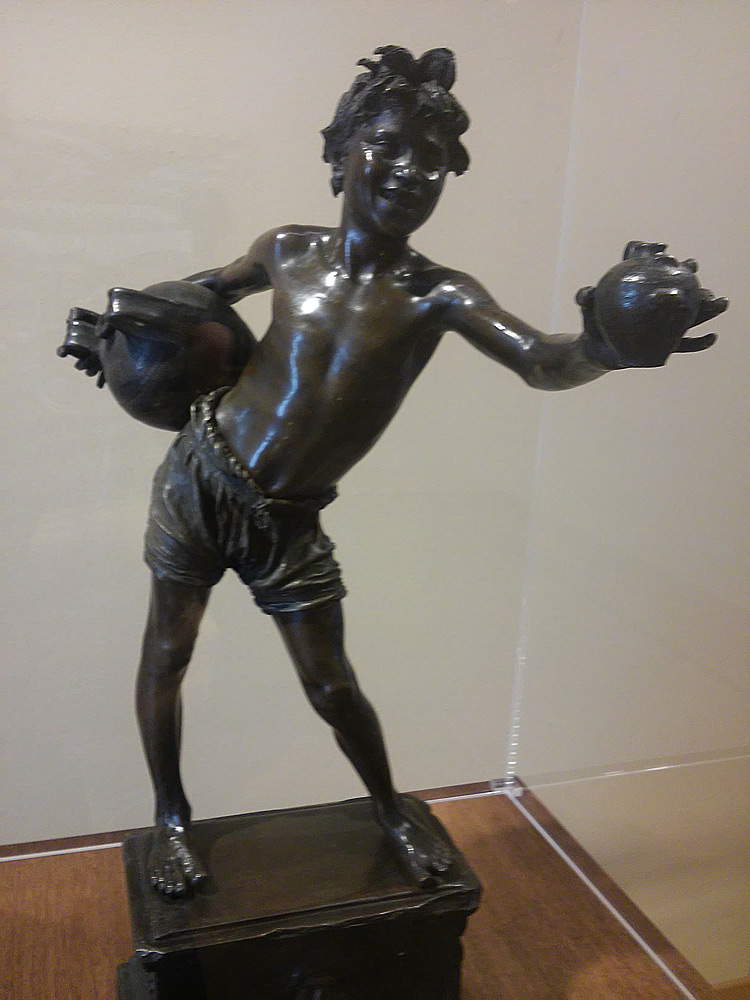by Redazione , published on 15/06/2018
Categories: News Focus
/ Disclaimer
Opening in Carrara, at Palazzo Cucchiari, is the exhibition 'Colors and Forms of Work. From Signorini and Fattori to Pellizza da Volpedo and Balla,' from June 16 to October 21, 2018.
Opening tomorrow in Carrara, at Palazzo Cucchiari, is the exhibition Colori e forme del lavoro. From Signorini and Fattori to Pellizza da Volpedo and Balla, curated by Massimo Bertozzi and Ettore Spalletti, scheduled from June 16 to October 21, 2018. The exhibition presents paintings and sculptures by those artists who after the Unification of Italy arranged a new figuration of history, representing no longer the heroes of history and literature, poets, and saints, but the common people caught in their daily activities, especially in the toil of labor, in the fields, in the workshops, in domestic work, and in the workshop. These artists also represented the misery and harsh conditions of the workers of the late 19th and early 20th centuries.The exhibition, which shows about fifty works by artists such as Giuseppe Pellizza da Volpedo, Giovanni Fattori, Telemaco Signorini, Ettore Tito, Plinio Nomellini, Leonardo Bistolfi, Giacomo Balla and many other great protagonists of the time, is promoted and organized by the Giorgio Conti Foundation and consists of septet sections: domestic work, work in the fields, work in the sea and rivers, trade, work in workshops and manufactures, work in mines and quarries, immigration and social conditions.
“This year,” says
Franca Conti, president of the Conti Foundation, “the theme of the exhibition is very challenging and very important but also very topical. Through the forms and colors of art we analyze a period from the unification of Italy to the Great War. The protagonists are the workers: humble people, artisans, land workers. And often the protagonist is despair: despair over the lack of work, over fatigue, over working conditions. But this despair is always endured with great dignity. The Giorgio Conti Foundation is therefore proud to present you with this important exhibition, which is also captivating and evocative, in a city like Carrara where the tradition of work is strong and where activities related to the mining and processing of marble have always conditioned a profound culture of work.”
“The theme ’art and work,’ that is, how the figurative arts have interpreted and seen the world of work,” says Ettore Spalletti, "is not a very new theme: in Italy there have been many manifestations in the past decades, starting with the Milan exhibition of 1979, which, however, took as its specific object not work, but the relationships between art and society, and of course within these relationships work has a particular relevance. Another milestone was the exhibition organized at the Vatican City to celebrate the centenary of Leo XIII’s encyclical Rerum novarum, an exhibition with a European scope whose theme was about art and society in Europe with works ranging from the early nineteenth century to the mid-twentieth century, so the theme, compared to ours, was much broader both geographically and chronologically. Then there were many other more or less large and important initiatives, including initiatives promoted by the union, which at one point began to organize exhibitions on the theme of labor. Among the initiatives was the exhibition celebrating the 100th anniversary of the founding of three chambers of labor in Lombardy, again with works ranging from the mid-nineteenth century to contemporary times. Then there was the exhibition organized by the CGIL on the theme of labor, with works that were part of the union’s collections, and where it went all the way to modern-day art. Lately, the focus has been on the relationship between figurative arts and women’s labor with special attention to the relationship between women’s labor and applied arts, and this line of research has not yielded exhibitions as results, but very important, current and up-to-date studies. Our project I believe differs from these initiatives because it takes the world of work, and not society, as a specific point of reference. The exhibition in particular deals with the world of work distinguished in its various activities: in the fields, in the workshops, in commerce, in the waters, seas and rivers, and so on. Around this core and scan we have tried to represent the various ways in which different artists have interpreted the same subject: the result is a very varied but also unexpected panorama. I hope that this choice of ours can be shared, appreciated and also a source of reflection."
“For at least twenty years I would have liked to organize an exhibition of this kind,” Massimo Bertozzi argues, “especially because I would have liked to exhibit Vincenzo Vela’s Monument to the Victims of Labor, preserved at the Gallery of Modern and Contemporary Art in Rome, which, however, because of the new layout is in storage, so the public no longer has the opportunity to see it: during these four months the work can be seen in Carrara, at the entrance to this exhibition. It is an important sculpture in art history: it is the most beautiful realist sculpture in Europe and one of the most beautiful sculptures of all time. It is a large, monumental, bronze high-relief displayed at the entrance together with a work by Achille D’Orsi depicting a hoe-worker exhausted by fatigue. Its title is ’Promixus tuus,’ and Camillo Boito, when he saw it in Paris, said that D’Orsi had made a monument to the recoiled from work, because it depicts a man almost killed by the fatigue and physical suffering that a certain way of approaching work entails. We made this choice for the beginning of the exhibition to say that work is also fatigue. For us nowadays, work is a momenro of redemption, even social redemption, but there was a time in history when work was brutalization, it was almost the continuation of slavery with other systems. This exhibition also says of that situation, of a time when work is a compulsion, of a time when there is the problem of not having work, the problem of those who are no longer able to do it, but also the problem of those who are able to do it and find it but in almost inhuman conditions. The exhibition starts where the value of democracy in Italy is discovered, and the artists consequently discover the need to speak to the people and to speak about the people, to speak to the workers and to speak about the workers. The exhibition says that from work as constraint we can move on to work as redemption and redemption, and thus helps to rethink what was said in the days of the partisans: ’a day will come when we will all work in freedom.’”
The review has obtained the patronage of the Chamber of Deputies, Region of Tuscany, Province of Massa and Carrara. Sponsor Red Graniti, technical partners Unicoop Tirreno, Unicoop Firenze and la Feltrinelli. Media partners Finestre Sull’Arte and Exibart. Below is an exclusive preview selection of the exhibition and some of the works that can be found at Palazzo Cucchiari.
 |
| Vincenzo Vela, Monument to the Victims of Labor (1882; bronze, 239 x 323 x 40 cm; Rome, National Gallery of Modern and Contemporary Art) |
 |
| Hall of the exhibition Colors and forms of labor in Carrara, Palazzo Cucchiari |
 |
| Hall of the exhibition Colori e forme del lavoro a Carrara, Palazzo Cucchiari |
 |
| Gerolamo Induno, La Filatrice (1863; oil on canvas, 65.5 x 52.2 cm; Genoa, Galleria d’Arte Moderna) |
 |
| Hall of the exhibition Colori e forme del lavoro a Carrara, Palazzo Cucchiari |
 |
| Giovanni Fattori, Waiting (1899; oil on panel, 26.5 x 36.5 cm; Private Collection) |
 |
| Giuseppe Pellizza da Volpedo, Study for Fiumana (later Fourth Estate) (1894-1895; charcoal and contè on paper, 158.5 x 95 cm; Alessandria, Museo Civico e Pinacoteca) |
| <img src=’https://cdn.finestresullarte.info/rivista/immagini/2018/893/guglielmo-ciardi-laguna.jpg ’ alt=“Guglielmo Ciardi, Lagoon with Boats and Fishermen (1899-1900; oil on canvas, 55 x 99.5 cm; Milan, Museo Nazionale Scienza e Tecnologia <a href=”https://www.finestresullarte.info/arte-base/leonardo-da-vinci-vita-opere“>Leonardo da Vinci</a>) ” title=“Guglielmo Ciardi, Lagoon with Boats and Fishermen (1899-1900; oil on canvas, 55 x 99.5 cm; Milan, Museo Nazionale Scienza e Tecnologia Leonardo da Vinci) ” /> |
| Guglielmo Ciardi, Lagoon with Boats and Fishermen (1899-1900; oil on canvas, 55 x 99.5 cm; Milan, Museo Nazionale Scienza e Tecnologia Leonardo da Vinci) |
 |
| Angiolo Tommasi, The Rezzaglio (1889; oil on canvas, 136 x 246 cm; Unipol Group Art Heritage) |
 |
| Patrizio Fracassi, Fifty Years in the Mine (c. 1900; bronze, 183 x 80 x 80 cm; Siena, Banca Monte dei Paschi Collections) |
 |
| Francesco Saverio Altamura, Il lavoro (1869; oil on canvas, 77 x 123 cm; Naples, Museo Nazionale di Capodimonte) |
 |
| Luigi Serra, I coronari a San Carlo dei Catinari (1885; oil on canvas, 57 x 129 cm; Florence, Gallerie degli Uffizi) |
 |
| Ettore Tito, La pescheria vecchia (1893; oil on canvas, 130 x 200 cm; Rome, National Gallery of Modern and Contemporary Art) |
 |
| Aldo Carpi, Campagna (1919; oil on wood, 17 x 25.5 cm; Milan, Museo Nazionale Scienza e Tecnologia Leonardo da Vinci) |
 |
| Plinio Nomellini, The Construction Site (1904; oil on canvas, 42 x 85.5 cm; Società di Belle Arti di Viareggio) |
 |
| Eugenio Spreafico. From work. The return from the spinning mill (1890-1895; oil on canvas, 101 x 194.5 cm; Monza, Musei Civici) |
 |
| Carlo Nicoli, Le travail (second half of the 19th century; bronze, 73 x 27 x 27 cm; Rome, Private Collection) |
 |
| Vincenzo Gemito, The Waterman (1881; bronze casting, 55 x 19 x 26 cm; Milan, Museo Nazionale Scienza e Tecnologia Leonardo da Vinci) |
Warning: the translation into English of the original Italian article was created using automatic tools.
We undertake to review all articles, but we do not guarantee the total absence of inaccuracies in the translation due to the program. You can
find the original by clicking on the ITA button. If you find any mistake,please contact us.
